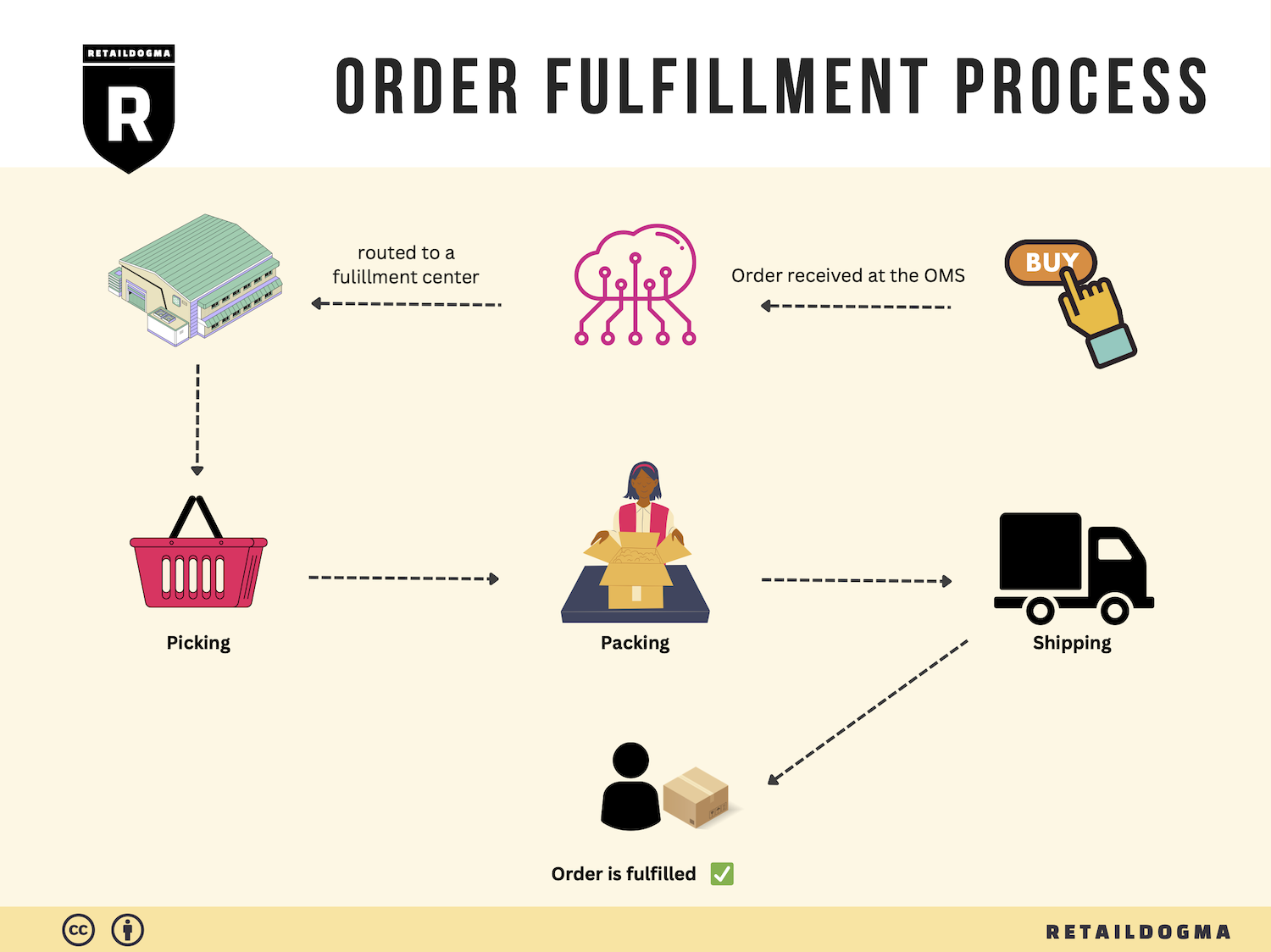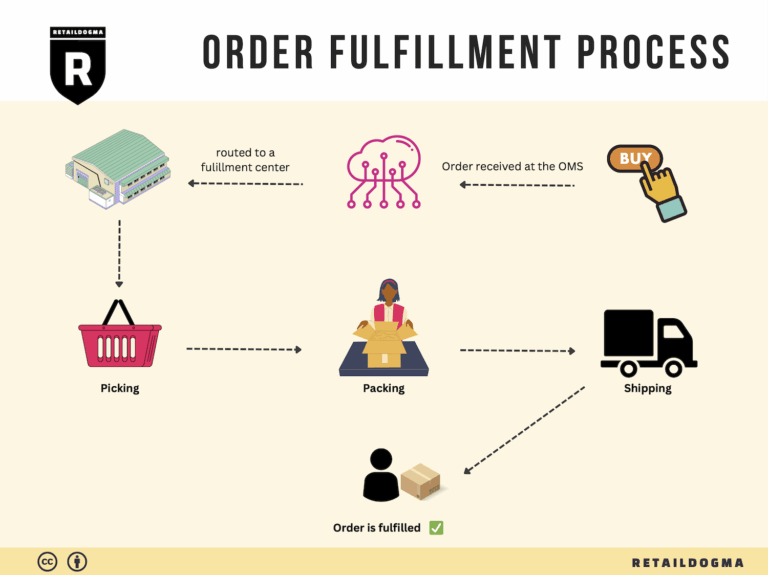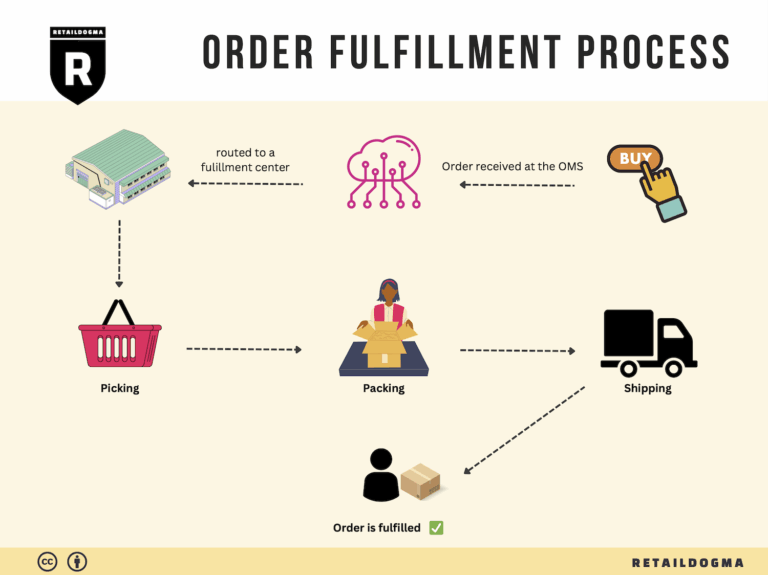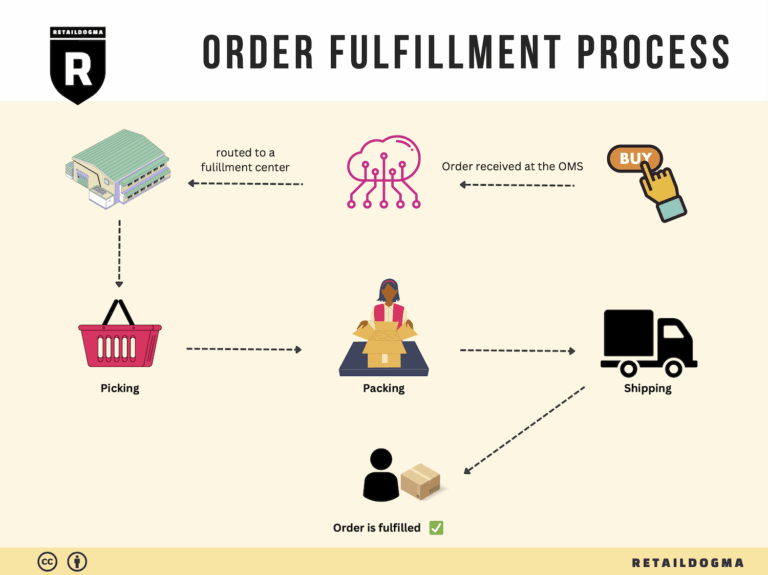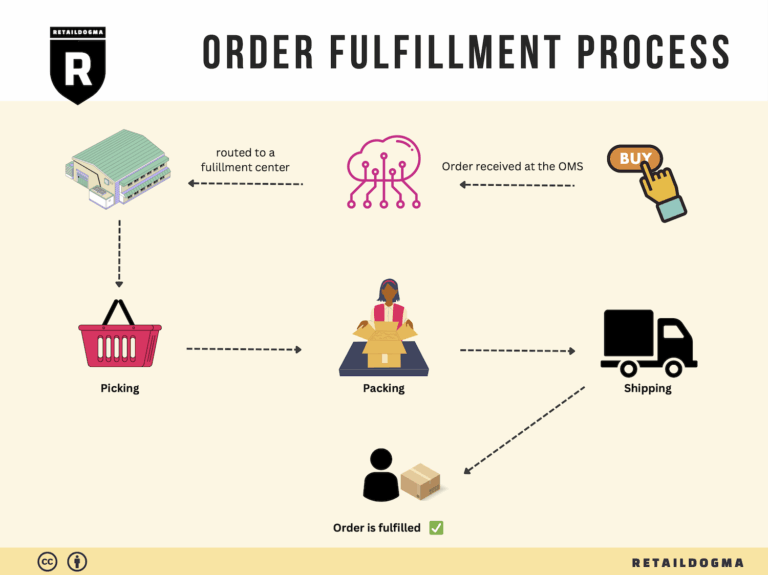How Order Fulfillment Works: A Step-by-Step Guide for Businesses
What is E-commerce Fulfillment? An Introduction for Growing Businesses
Understanding E-commerce Fulfillment: A Key to Scaling Your Business
As an e-commerce business owner, you may find yourself overwhelmed with the complexities of packing and shipping orders. The excitement of growing sales can quickly turn into a logistical nightmare if you are not equipped to handle the increasing order volume. This is where effective e-commerce fulfillment comes into play. At its core, fulfillment is simply the process of getting a product from your digital storefront into the hands of your customers. It encompasses everything from receiving inventory to shipping orders and managing returns.
In this guide, we will delve into the various models of e-commerce fulfillment, helping you navigate the options available to your business. We will explore popular fulfillment methods, such as Third-Party Logistics (3PL) and Fulfillment by Amazon (FBA), detailing their distinct advantages and challenges. Understanding these models will empower you to choose the one that aligns best with your operational goals and customer expectations.
We will also cover the core services involved in the fulfillment process. Key components such as inventory management, order processing, picking and packing, shipping, and returns will be broken down into clear, actionable steps. This information is crucial for establishing an efficient fulfillment strategy that can scale with your business.
Additionally, we will provide guidance on how to select the right fulfillment partner. The right choice can significantly impact your operational efficiency, customer satisfaction, and ultimately, your bottom line. We will discuss the essential criteria to consider when evaluating potential partners, including their technology, pricing structure, and track record.
Speaking of pricing, we will also examine the costs associated with different fulfillment models. Understanding the financial implications of your fulfillment strategy is vital for maintaining profitability as you scale.
The goal of this guide is to empower you with the knowledge necessary to make informed decisions about your logistics. By implementing a streamlined fulfillment process, you can enhance customer satisfaction, build brand loyalty, and focus on what you do best: growing your business. Let’s dive into the world of e-commerce fulfillment and unlock the potential for your brand’s success.
What You’ll Learn In This Guide
- What is E-commerce Fulfillment? An Introduction for Growing Businesses
- The Order Fulfillment Process: From ‘Buy’ Button to Customer’s Door
- Comparing Fulfillment Models: In-House vs. 3PL vs. Dropshipping
- A Deep Dive into Amazon FBA: Pros, Cons, and Who It’s For
- Core Services Offered by Fulfillment Centers
- How to Choose a Fulfillment Partner: A 6-Point Checklist
- Understanding Fulfillment Pricing: A Breakdown of Common Fees
- Frequently Asked Questions (FAQs) about Fulfillment
- Conclusion: Is Outsourcing Fulfillment the Right Move for Your Business?
- Important Disclaimer
The Order Fulfillment Process: From ‘Buy’ Button to Customer’s Door
1. Receiving Inventory
The order fulfillment process begins with receiving inventory from suppliers or manufacturers. This step is crucial as it sets the foundation for the entire logistics operation. Upon arrival at the fulfillment center, each shipment is checked against the purchase order to ensure accuracy. This includes verifying quantities and inspecting for any damages. Key to this process is the use of Stock Keeping Units (SKUs), which serve as unique identifiers for each product, allowing for efficient tracking and management.
Accurate receiving is vital because discrepancies at this stage can lead to inventory inaccuracies, which can ripple through the entire fulfillment process. For instance, if the inventory received does not match the order, it can result in stockouts or overstock situations, both of which can harm customer satisfaction and profitability. Implementing robust receiving protocols and utilizing technology like Warehouse Management Systems (WMS) can significantly enhance accuracy and efficiency in this critical phase.
2. Warehouse Storage
Once inventory is received and verified, the next step is effective warehouse storage. This involves organizing products in a manner that optimizes picking efficiency and space utilization. Items are typically stored based on a variety of factors, including size, turnover rate, and handling requirements. The strategy employed for storage can vary; for instance, high-demand items may be placed closer to packing stations to minimize travel time for pickers.
Efficient storage is essential for maintaining a streamlined operation. By using techniques such as zone-based storage or dynamic slotting, warehouses can significantly reduce picking errors and improve response times. Additionally, accurate inventory management through an Inventory Management System (IMS) ensures that stock levels are updated in real-time, preventing overselling and stockouts. This step is fundamental in creating a responsive and agile fulfillment operation that can scale with demand.
3. Order Picking
Once a customer places an order, the next step is order picking. This phase involves retrieving items from their storage locations based on specific instructions provided by a pick list. A pick list details the SKUs and quantities required for each order, guiding warehouse staff in efficiently gathering the necessary products.
Order picking is a critical step because the speed and accuracy at which orders are picked directly affect customer satisfaction. Various picking methods can be employed, such as batch picking (where similar orders are grouped) or zone picking (where workers are assigned to specific areas). Each method has its advantages, and the choice often depends on the volume of orders and the layout of the warehouse.
Implementing efficient picking strategies not only enhances operational efficiency but also reduces the likelihood of errors, which can lead to costly returns and customer dissatisfaction. Therefore, investing in training for picking staff and utilizing technology like handheld scanners can further streamline this process.
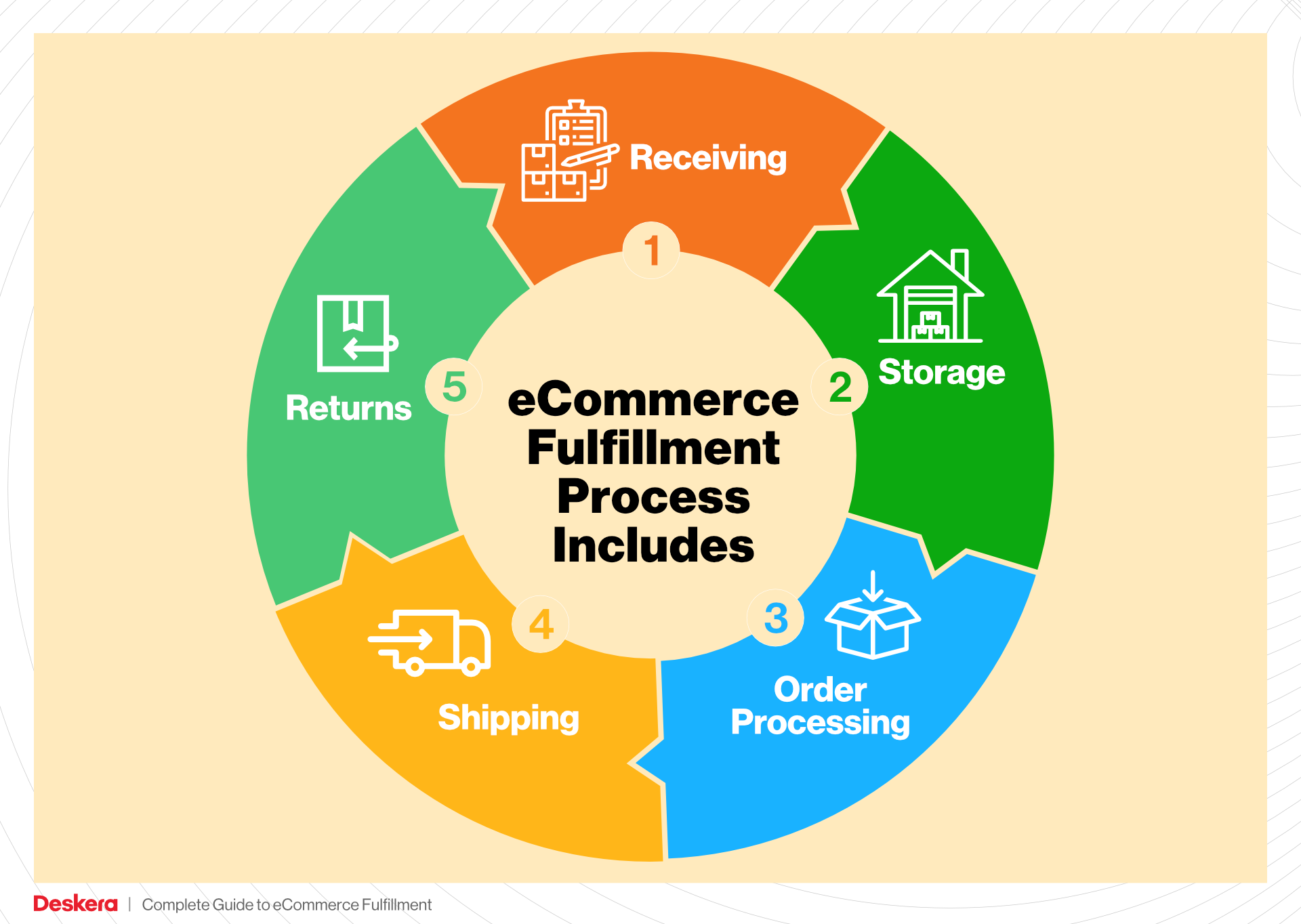
4. Order Packing
After items are picked, they move to the packing station, where they are prepared for shipment. This stage is not just about placing items in boxes; it also involves ensuring that products are securely packed to withstand transit. During packing, items are scanned to confirm accuracy against the original order, which helps prevent shipping errors.
The packing process is vital for several reasons. Firstly, it protects the items from damage, reducing the likelihood of returns due to breakage. Secondly, effective packing can optimize shipping costs by minimizing package size and weight. This is where branding can also play a role; using custom packaging can enhance the customer experience and reinforce brand loyalty.
Incorporating best practices in packing—such as using eco-friendly materials and including personalized inserts—can differentiate your brand and foster a positive relationship with customers. Thus, a well-executed packing process is integral to both operational efficiency and customer satisfaction.
5. Shipping & Delivery
The final step in the order fulfillment process is shipping and delivery, where the packed orders are handed off to shipping carriers. This stage is critical, as it represents the point of interaction between your business and the customer. Factors such as delivery speed, cost, and accuracy all come into play here.
Selecting the right carrier is essential. It involves evaluating delivery options based on speed, cost, and service level agreements (SLAs). Advanced fulfillment platforms can automate this selection process, ensuring that the most cost-effective and timely option is chosen for each shipment. Once the order is shipped, tracking information is generated and communicated to the customer, allowing them to monitor their order’s journey.
Effective shipping and delivery can significantly influence customer perceptions of your brand. Timely deliveries and transparent communication about order status build trust and can lead to repeat business. Therefore, ensuring that your fulfillment network is strategically positioned and optimized for efficiency can have a substantial impact on your overall success in e-commerce.
Comparing Fulfillment Models: In-House vs. 3PL vs. Dropshipping
Comparing Fulfillment Models
Understanding the various fulfillment models available to e-commerce businesses is crucial for optimizing operations and scaling efficiently. The three primary models—In-House Fulfillment, Third-Party Logistics (3PL), and Dropshipping—each present unique advantages and challenges. Below is a comparative table that outlines these differences.
| Model | Who Handles Inventory | Best For (Business Stage) | Key Advantage | Key Disadvantage |
|---|---|---|---|---|
| In-House Fulfillment | The business itself | Startups and small businesses | Complete control over inventory | High overhead costs as you scale |
| Third-Party Logistics (3PL) | An external logistics provider | Growing and established businesses | Scalability and expertise | Less control over fulfillment process |
| Dropshipping | Supplier or manufacturer | New businesses or niche products | Low startup costs and minimal risk | Lower profit margins and quality control issues |
In-House Fulfillment
In-house fulfillment means that a business manages the entire order fulfillment process within its own facilities, utilizing its own staff and resources. This model is particularly advantageous for startups and small businesses that are just beginning their e-commerce journey. The primary benefit of in-house fulfillment is the complete control it provides over inventory management, packing, and shipping processes. Businesses can ensure that their brand’s standards are met at every step, from packaging aesthetics to delivery timelines.
However, as businesses grow, the disadvantages of this model become more pronounced. High overhead costs associated with warehousing, staffing, and logistics can quickly accumulate. Additionally, scaling operations can strain existing resources, leading to inefficiencies and potential fulfillment bottlenecks. As order volumes increase, maintaining the quality of service and timely deliveries can become increasingly challenging.
Third-Party Logistics (3PL)
Third-party logistics (3PL) involves outsourcing fulfillment processes to specialized logistics providers. This model is ideal for growing and established businesses that require scalability without the burden of managing fulfillment in-house. A 3PL partner can handle a wide range of logistics activities, including warehousing, inventory management, order processing, and shipping. They often leverage advanced technology and expertise to optimize these processes, allowing businesses to focus on core operations like marketing and product development.
The major advantage of 3PL is the ability to scale quickly and efficiently. As order volumes fluctuate, businesses can easily adjust their logistics needs without significant investment in additional infrastructure. However, a key disadvantage is the potential loss of control over the fulfillment process. Businesses must rely on the 3PL provider to maintain service levels and quality, which can lead to challenges in customer satisfaction if expectations are not met.
Dropshipping
Dropshipping is a fulfillment model where the retailer does not hold any inventory. Instead, when an order is placed, the retailer purchases the item from a third-party supplier, who then ships it directly to the customer. This model is particularly attractive for new businesses or those selling niche products, as it requires minimal upfront investment and eliminates the risks associated with inventory management.
The key advantage of dropshipping is the low startup costs, allowing entrepreneurs to enter the e-commerce space without substantial financial commitment. Additionally, it provides flexibility in terms of product offerings, as businesses can easily test new items without the risk of overstock. However, dropshipping comes with significant drawbacks, such as lower profit margins due to reliance on suppliers and potential quality control issues. Since businesses do not handle the products directly, they have limited oversight over product quality and shipping times, which can negatively impact customer experience.
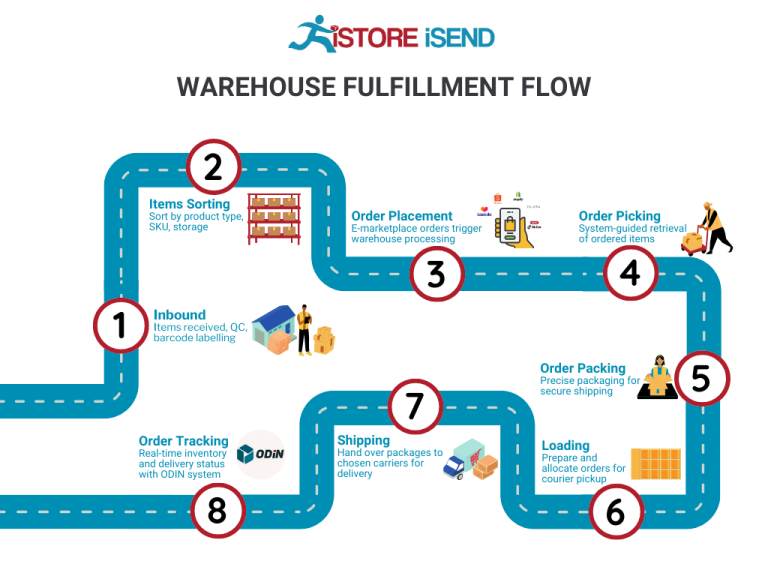
Conclusion
Choosing the right fulfillment model is crucial for e-commerce businesses aiming to scale effectively. Each model has its own set of advantages and disadvantages, and the decision should align with the business’s current stage, growth ambitions, and operational capabilities. In-house fulfillment offers control but can be resource-intensive, while 3PL provides scalability at the expense of some control. Dropshipping presents a low-risk entry point but may compromise margins and quality. By evaluating these factors, business owners can make informed decisions to optimize their fulfillment strategy and drive growth.
A Deep Dive into Amazon FBA: Pros, Cons, and Who It’s For
Understanding Fulfillment by Amazon (FBA)
Fulfillment by Amazon (FBA) is a service provided by Amazon that allows e-commerce sellers to leverage Amazon’s vast logistics network to store, pack, and ship their products. When a seller enrolls in FBA, they send their inventory to Amazon’s fulfillment centers, where Amazon takes on the responsibility of storing the products, processing orders, and handling customer service, including returns.
How FBA Works
-
Inventory Preparation: Sellers prepare their products according to Amazon’s guidelines, which include labeling, packaging, and ensuring compliance with safety standards.
-
Shipping to Fulfillment Centers: Once prepared, sellers ship their products to Amazon’s designated fulfillment centers. Amazon provides sellers with shipping labels and instructions to streamline this process.
-
Storage: After arrival, the products are stored in Amazon’s warehouse. Sellers can track their inventory through the Amazon Seller Central dashboard.
-
Order Processing: When a customer orders a product, Amazon picks, packs, and ships the item on behalf of the seller. This includes handling the entire logistics process, from packing the product to shipping it to the customer.
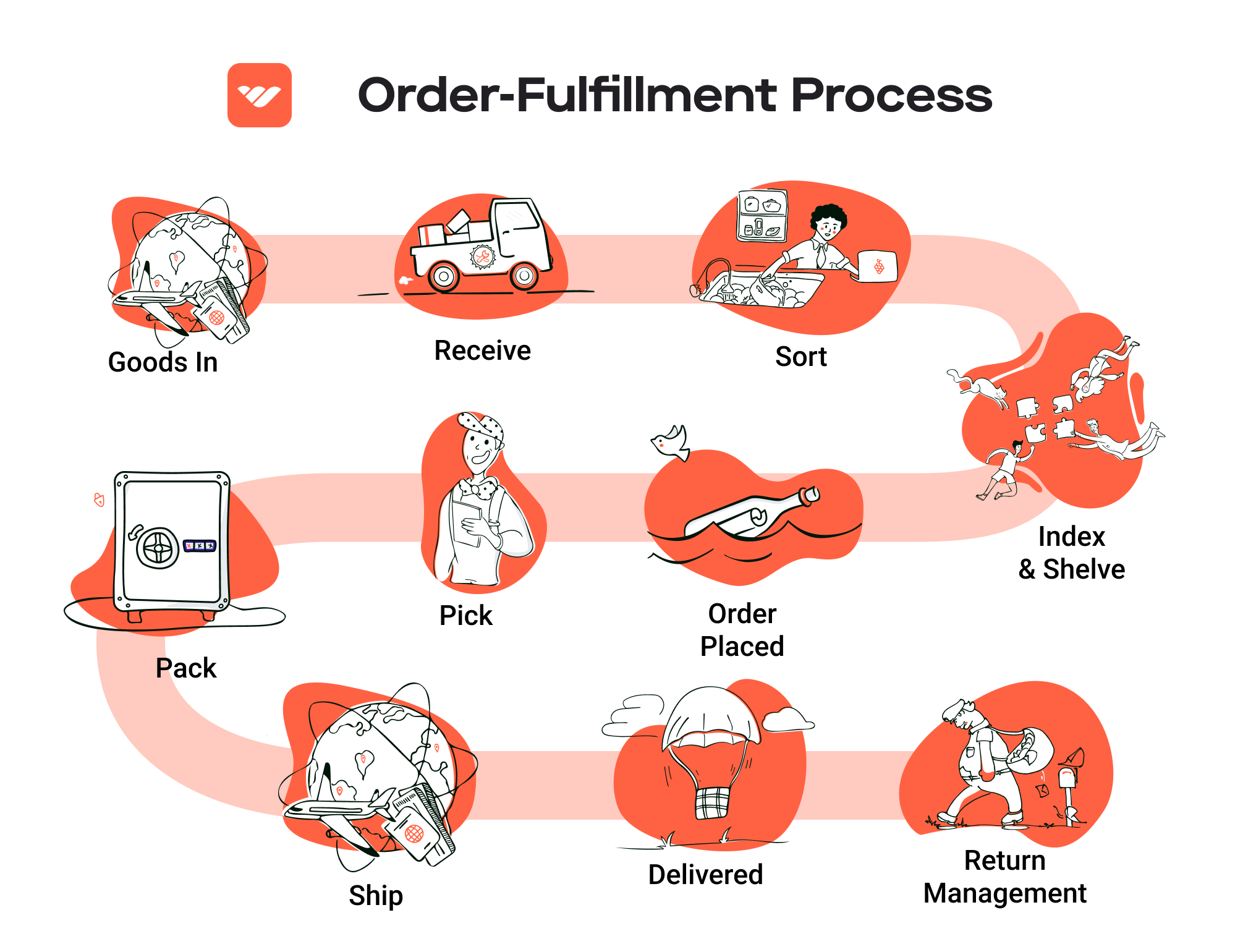
-
Customer Service and Returns: Amazon manages customer service inquiries related to FBA products, including returns and refunds, which enhances the customer experience and reduces the seller’s workload.
Pros of Using FBA
1. Prime Eligibility
Products fulfilled through FBA are eligible for Amazon Prime, providing sellers with access to millions of Prime members who often prioritize Prime-eligible items when shopping. This can significantly increase a seller’s visibility and sales potential.
2. Customer Trust
Amazon is a trusted brand, and using FBA can enhance a seller’s credibility. Customers are often more willing to purchase from sellers using FBA due to Amazon’s reputation for reliable service, including fast shipping and hassle-free returns.
3. Multi-Channel Fulfillment
FBA isn’t limited to Amazon sales. Sellers can utilize FBA to fulfill orders from other sales channels, such as their own e-commerce websites or other marketplaces. This flexibility allows businesses to streamline their fulfillment process while still maintaining inventory in Amazon’s system.
4. Scalability
FBA allows sellers to scale their operations without the need for investing in additional warehousing or logistics infrastructure. As sales grow, sellers can easily send more inventory to Amazon’s fulfillment centers.
5. Simplified Logistics
With FBA, sellers can focus on other aspects of their business, such as marketing and product development, while Amazon manages the logistics. This can lead to increased efficiency and reduced operational headaches.
Cons of Using FBA
1. High Fees
While FBA offers many benefits, it comes at a cost. Amazon charges various fees, including storage fees for inventory held in their warehouses and fulfillment fees based on the size and weight of the products. These costs can add up quickly and impact profit margins, especially for low-priced items.
2. Strict Inventory Rules
Sellers must adhere to Amazon’s stringent inventory management rules, including limitations on the amount of inventory they can send to fulfillment centers. This can create challenges, particularly for sellers with fluctuating demand or seasonal products.
3. Commingling Risks
FBA operates on a commingling model, which means that sellers’ products may be stored alongside those of other sellers. This can lead to risks, such as receiving damaged or incorrect products if another seller’s inventory is mixed with yours. Although Amazon offers a “Stickered Inventory” option to mitigate this risk, it may not be feasible for all sellers.
4. Limited Control Over Shipping
Once products are in Amazon’s fulfillment centers, sellers have limited control over shipping times and methods. This can be particularly challenging if a seller wants to offer unique shipping options or promotions that deviate from Amazon’s standard practices.
5. Dependence on Amazon
By using FBA, sellers become reliant on Amazon’s policies and processes. Any changes to Amazon’s fees, rules, or algorithms can directly impact a seller’s business, potentially leading to decreased sales or increased costs.
Who is FBA Best For?
FBA is ideal for e-commerce sellers looking to scale their business without the complexities of managing logistics. It suits:
-
Small to Medium-Sized Businesses: Sellers who want to focus on growing their brand and sales rather than logistics can benefit significantly from FBA.
-
Brands with High Sales Volume: Sellers with a steady demand can take advantage of the efficiencies FBA provides, especially if they sell products that are eligible for Prime.
-
New Sellers: Entrepreneurs just starting in e-commerce may find FBA a low-barrier way to enter the market, leveraging Amazon’s infrastructure and customer base.
-
Multi-Channel Sellers: Businesses looking to streamline fulfillment across various platforms will appreciate FBA’s multi-channel fulfillment capabilities.
In conclusion, Fulfillment by Amazon offers a powerful solution for e-commerce businesses, allowing them to leverage Amazon’s logistics capabilities while focusing on growth. However, it’s essential to weigh the pros and cons to determine if FBA aligns with your business strategy and operational needs.
Core Services Offered by Fulfillment Centers
Inventory Management & Warehousing
Inventory management and warehousing are foundational services provided by fulfillment centers, ensuring that e-commerce businesses maintain optimal stock levels and efficiently manage their products. This service involves the systematic oversight of inventory, including receiving shipments, tracking stock levels, and organizing products within a warehouse.
What It Is: Fulfillment centers utilize sophisticated Warehouse Management Systems (WMS) to track inventory in real-time, enabling businesses to know exactly what products are in stock, their locations within the warehouse, and when to reorder. This process often includes categorizing items based on demand, turnover rates, and storage requirements.
Benefits: Effective inventory management minimizes the risks of stockouts and overstock situations, both of which can harm cash flow and customer satisfaction. By having a reliable partner handle warehousing, e-commerce businesses can focus on growth and customer engagement rather than the complexities of inventory logistics. Additionally, fulfillment centers often employ advanced data analytics to forecast demand, allowing businesses to adjust their inventory strategies proactively. This leads to improved operational efficiency and reduced holding costs.
Pick and Pack Services
Pick and pack services are essential for ensuring that orders are fulfilled accurately and efficiently. This service involves the selection of items from the warehouse (picking) and then packaging them appropriately for shipment (packing).
What It Is: When an order is placed, fulfillment centers use various picking strategies—such as batch picking, zone picking, or wave picking—to efficiently gather items. Once picked, items are carefully packed, often using branded materials or protective packaging to ensure safe transit.
Benefits: The primary advantage of professional pick and pack services is increased accuracy and speed in order fulfillment. This not only leads to faster shipping times but also enhances customer satisfaction by reducing errors and ensuring that the correct items are delivered. Furthermore, many fulfillment centers use automation and technology to streamline these processes, which can significantly lower labor costs and improve turnaround times. For e-commerce businesses, this means the ability to scale operations without compromising quality or customer experience.
Kitting and Assembly
Kitting and assembly services allow e-commerce businesses to offer bundled products or customized orders, enhancing their product offerings and customer satisfaction.
What It Is: Kitting involves assembling multiple items into a single package or kit, which can include anything from gift sets to subscription boxes. Fulfillment centers handle the entire process, from sourcing the individual components to packaging them together in a cohesive manner.
Benefits: By utilizing kitting services, businesses can create unique product offerings that stand out in the marketplace, driving additional sales and attracting new customers. This service also streamlines the fulfillment process for complex orders, reducing the time and effort required for assembly. Furthermore, kitting can help businesses manage inventory more effectively by consolidating stock and reducing the number of SKUs they have to track. This not only simplifies logistics but also enhances the customer experience by delivering comprehensive solutions in one package.
Returns Management (Reverse Logistics)
Returns management, or reverse logistics, is a critical service offered by fulfillment centers that handles the entire process of returned merchandise. Efficient returns management is essential for maintaining customer satisfaction and brand loyalty.
What It Is: This service encompasses the processes involved when a customer returns a product, including receiving the returned items, inspecting them for damage, restocking sellable items, and managing the disposal of unsellable goods. Fulfillment centers often provide customers with an easy-to-use return portal, ensuring a hassle-free experience.
Benefits: A well-managed returns process can significantly enhance customer loyalty. When customers find it easy to return items, they are more likely to make future purchases, knowing that their satisfaction is prioritized. Additionally, effective returns management can provide valuable insights into customer behavior and product performance, enabling businesses to identify patterns in returns and address potential quality issues proactively. This not only reduces costs associated with returns but also helps in refining product offerings and improving overall customer experience.
In conclusion, partnering with a fulfillment center for these core services allows e-commerce businesses to streamline their operations, reduce costs, and focus on scaling their sales and customer engagement strategies. By leveraging the expertise and infrastructure of fulfillment centers, businesses can enhance their logistics capabilities and deliver exceptional service to their customers.
How to Choose a Fulfillment Partner: A 6-Point Checklist
Location & Warehouse Network
Importance:
The geographical location of your fulfillment partner’s warehouses can significantly affect shipping times and costs. A strategically located partner can help you reach your customers faster and at a lower cost, enhancing the overall customer experience.
Questions to Ask:
– Where are your warehouses located, and how does that align with my target market?
– How many fulfillment centers do you operate, and what is their capacity?
– Can you provide insights into your shipping times and the carriers you work with in each region?
Technology & Integrations
Importance:
In today’s e-commerce landscape, technology plays a crucial role in ensuring seamless operations. A fulfillment partner should offer robust technology solutions that integrate well with your existing systems, such as your e-commerce platform and inventory management system. This connectivity is essential for real-time inventory tracking and order processing.
Questions to Ask:
– What technology platforms do you use for inventory management and order processing?
– Can your systems integrate with my e-commerce platform (e.g., Shopify, WooCommerce)?
– Do you offer real-time tracking and reporting features? What kind of insights can I expect from your reporting tools?
Specializations (e.g., Cold Storage, Oversized Items)
Importance:
Not all fulfillment partners are equipped to handle specialized inventory needs. Whether you sell perishable goods, oversized items, or delicate products, it’s vital to choose a partner that has the necessary facilities and expertise to manage your specific requirements.
Questions to Ask:
– Do you have experience handling my type of products (e.g., food, fragile items, large equipment)?
– What kind of specialized storage options do you offer (e.g., climate control, heavy-duty shelving)?
– Can you provide examples of how you’ve successfully managed fulfillment for similar products?
Scalability & Capacity
Importance:
As your business grows, your fulfillment needs will evolve. A good partner should not only meet your current capacity requirements but also provide the scalability to accommodate future growth without compromising service quality.
Questions to Ask:
– How do you handle peak seasons and sudden spikes in order volume?
– Can you accommodate seasonal fluctuations in inventory levels?
– What is your process for scaling operations if my business grows rapidly?
Pricing and Contracts
Importance:
Understanding the pricing structure and contract terms of a fulfillment partner is crucial to ensure that it aligns with your budget and financial goals. Hidden fees can erode margins, so clarity in pricing is essential.
Questions to Ask:
– What is your pricing model (e.g., per order, per item, flat fee)?
– Are there any additional fees I should be aware of (e.g., storage, picking, packing)?
– What are the terms of the contract, and is there flexibility for renegotiation as our business evolves?
Customer Support & Reviews
Importance:
Reliable customer support is vital in the fast-paced world of e-commerce. When issues arise—whether due to inventory discrepancies, shipping delays, or customer inquiries—having responsive and knowledgeable support can make a significant difference in resolving problems quickly.
Questions to Ask:
– What type of customer support do you offer (e.g., dedicated account manager, 24/7 support)?
– How do you handle issues or disputes related to order fulfillment?
– Can you provide references or testimonials from other clients in my industry?
Conclusion
Selecting the right fulfillment partner is a critical decision that can significantly impact your e-commerce business’s operational efficiency and customer satisfaction. By following this checklist and asking the right questions, you can make an informed choice that positions your business for growth and success. As you evaluate potential partners, prioritize those that align with your specific needs, values, and long-term goals.
Understanding Fulfillment Pricing: A Breakdown of Common Fees
Initial Setup Fees
When partnering with a fulfillment provider, businesses often encounter initial setup fees. These charges cover the costs associated with establishing the necessary infrastructure to manage your inventory and orders effectively. This may include the integration of your e-commerce platform with the fulfillment center’s systems, configuration of warehouse management software, and the creation of your account within their logistics framework.
Typically, initial setup fees can range from a few hundred to several thousand dollars, depending on the complexity of the integration and the provider’s pricing structure. Some fulfillment centers may offer a flat fee, while others might charge based on the volume of products to be stored or the number of SKUs. It’s essential to clarify what services are included in these fees to avoid unexpected costs later.
Receiving Fees
Receiving fees are charged when your inventory arrives at the fulfillment center. This fee typically covers the labor and resources needed to unload, inspect, and store your products. The calculation of receiving fees can vary depending on several factors, including the volume of inventory received, the number of pallets or boxes, and the complexity of the unloading process.
For instance, some providers may charge a flat fee per pallet, while others might have a tiered structure based on the total volume of goods received. It’s crucial for businesses to understand these fees, as they can significantly impact overall fulfillment costs, especially for brands with high turnover rates or frequent shipments.
Storage Fees (per pallet/bin)
Storage fees are recurring charges that businesses incur for keeping their inventory in the fulfillment center. These fees are typically calculated on a per-pallet or per-bin basis, with costs influenced by factors such as the size of the products, the total space occupied, and the duration of storage.
Storage fees can be structured in various ways. Some fulfillment centers charge a monthly rate based on the number of pallets stored, while others may implement a tiered pricing model that decreases the per-pallet fee as the number of pallets increases. It’s important to keep track of your inventory turnover rate to minimize storage costs, as long-term storage can lead to additional fees or even inventory liquidation in some cases.
Pick & Pack Fees (per item/order)
Pick and pack fees are incurred each time an order is processed. This fee covers the labor involved in selecting items from storage (picking) and packaging them for shipment (packing). The calculation of pick and pack fees can vary widely based on the fulfillment provider’s pricing model.
Most providers will charge a flat fee per item picked and packed, which may also include additional charges for specific packaging requirements, such as branded materials or special handling for fragile items. Some fulfillment centers may offer bulk discounts for businesses with high order volumes, which can help reduce overall fulfillment costs. Understanding these fees is crucial for budgeting and pricing strategies, as they directly affect your bottom line.
Shipping Fees
Shipping fees are one of the most significant costs associated with order fulfillment. These fees are determined by various factors, including the shipping carrier selected, the destination of the package, the weight and dimensions of the shipment, and the chosen service level (e.g., standard, expedited, or overnight).
Fulfillment centers often have contracts with shipping carriers that allow them to negotiate better rates based on their shipping volume. As a result, businesses can benefit from these discounts, but it’s essential to compare shipping options to find the most cost-effective solution. Additionally, consider whether your fulfillment provider offers shipping rate calculators or integration with multiple carriers to streamline the decision-making process.
Tips for Getting an Accurate Quote
When seeking fulfillment pricing quotes, consider the following tips to ensure you receive a comprehensive and accurate estimate:
-
Provide Detailed Information: Share specifics about your products, order volume, and fulfillment needs. The more information you provide, the more accurate the quote will be.
-
Ask About All Fees: Inquire about all potential fees, including hidden costs such as minimum order charges, overage fees for exceeding storage limits, and additional charges for special handling.
-
Compare Multiple Providers: Obtain quotes from several fulfillment centers to understand the market rate and identify the best value for your business.
-
Negotiate Terms: Don’t hesitate to negotiate the terms of the agreement. Many fulfillment providers are open to discussions, especially for businesses with the potential for high volumes.
-
Review Contracts Carefully: Before signing any agreement, review the contract thoroughly to ensure all fees and terms are clearly defined. This will help avoid any misunderstandings or unexpected costs down the line.
By understanding the various fulfillment pricing models and how they are calculated, e-commerce businesses can better manage their logistics costs and make informed decisions as they scale.
Frequently Asked Questions (FAQs) about Fulfillment
1. What is Amazon order fulfillment?
Amazon order fulfillment refers to the process of storing, picking, packing, and shipping products sold on Amazon’s platform. Sellers can choose to handle this process themselves or use Amazon’s Fulfillment by Amazon (FBA) service, where Amazon takes care of storage, shipping, and customer service on behalf of the seller.
2. How does Fulfillment by Amazon (FBA) work?
With FBA, sellers send their products to Amazon’s fulfillment centers. When a customer places an order, Amazon handles the picking, packing, and shipping of the product. Additionally, Amazon manages customer service and returns for these orders, allowing sellers to focus on other aspects of their business.
3. What are the benefits of using Amazon FBA?
Using FBA offers several advantages, including access to Amazon’s vast customer base, eligibility for Prime shipping, simplified logistics, and enhanced customer service. It can also improve product visibility and sales, as FBA products often rank higher in search results on Amazon.
4. What is the difference between a warehouse and a fulfillment center?
A warehouse is primarily focused on storing goods, while a fulfillment center is designed to efficiently process orders. Fulfillment centers integrate various logistics services, including inventory management, order processing, and shipping. They are optimized for quick order turnaround, unlike traditional warehouses.
5. What is a 3PL (Third-Party Logistics)?
A 3PL is a company that provides outsourced logistics services, including transportation, warehousing, and order fulfillment. E-commerce businesses often partner with 3PLs to streamline their supply chain, reduce costs, and improve service levels without having to manage logistics in-house.
6. How much do fulfillment services cost?
Fulfillment service costs vary based on several factors, including order volume, storage space, packaging, and shipping methods. Generally, fees can include storage fees (per cubic foot), picking and packing fees (per order or per item), and shipping costs. It’s important for businesses to compare multiple providers to find the best fit for their needs.
7. How do I choose the right fulfillment method for my business?
Choosing the right fulfillment method depends on your business size, order volume, product type, and growth projections. Consider factors such as shipping speed, cost, customer service, and whether you want to maintain control over inventory. Assess your operational capacity and whether you can manage fulfillment in-house or if partnering with a 3PL or using FBA is more advantageous.
8. Can I fulfill orders myself instead of using Amazon FBA?
Yes, you can fulfill orders yourself, which is known as Merchant Fulfilled Network (MFN). This approach allows you to manage your inventory and shipping, but it requires more effort and resources. You’ll need to handle storage, order processing, and customer service independently, which can be challenging as your business scales.
9. What are the common challenges of Amazon order fulfillment?
Common challenges include managing inventory levels, ensuring timely shipping, handling returns efficiently, and maintaining a high level of customer service. Additionally, sellers must navigate Amazon’s policies and requirements, which can change frequently. It’s crucial to have a robust fulfillment strategy to address these challenges effectively.
10. How can I improve my order fulfillment process?
To improve your order fulfillment process, consider optimizing your inventory management system, utilizing technology for tracking and reporting, and analyzing fulfillment metrics to identify bottlenecks. Streamlining picking and packing processes, offering multiple shipping options, and enhancing customer communication can also significantly improve efficiency and customer satisfaction.
Conclusion: Is Outsourcing Fulfillment the Right Move for Your Business?
Evaluating the Benefits of Outsourcing Fulfillment
As your e-commerce business evolves, so does the complexity of managing order fulfillment. Outsourcing fulfillment can present significant advantages, particularly for businesses aiming to scale efficiently. The primary benefits include:
-
Time Savings: By partnering with a fulfillment service, you can free up valuable time that would otherwise be spent on logistics management. This allows you to focus on core business activities such as marketing, product development, and customer engagement.
-
Scalability: Fulfillment partners are equipped to handle fluctuations in order volume, enabling you to scale operations seamlessly as your business grows. Whether you experience seasonal spikes or unexpected surges in demand, a reliable fulfillment provider can adapt to your needs without compromising service quality.
-
Expertise: Third-party logistics providers (3PLs) bring specialized knowledge in shipping, warehousing, and inventory management. Their experience can help streamline your operations, reduce shipping costs, and enhance the overall customer experience. This expertise is invaluable, particularly for businesses lacking in-house logistics capabilities.
However, the success of outsourcing fulfillment hinges on selecting the right partner. A trustworthy provider should align with your business goals, understand your unique needs, and offer transparent communication throughout the process. The wrong choice can lead to issues that affect customer satisfaction and brand reputation.
Take Action
Now is the time to assess your current shipping and fulfillment strategy. Consider conducting an audit of your existing processes to identify inefficiencies and areas for improvement. Ask yourself if outsourcing could alleviate some of your operational burdens and position your business for growth. By evaluating your options, you can determine whether a fulfillment partner is the right next step in your e-commerce journey. Don’t hesitate to explore the possibilities that outsourcing fulfillment can offer for your business’s future.
Important Disclaimer
⚠️ Important Disclaimer
The information in this guide is for educational purposes. Fulfillment services, pricing, and platform features change frequently. Always conduct your own due diligence and consult with providers directly before making business decisions.
